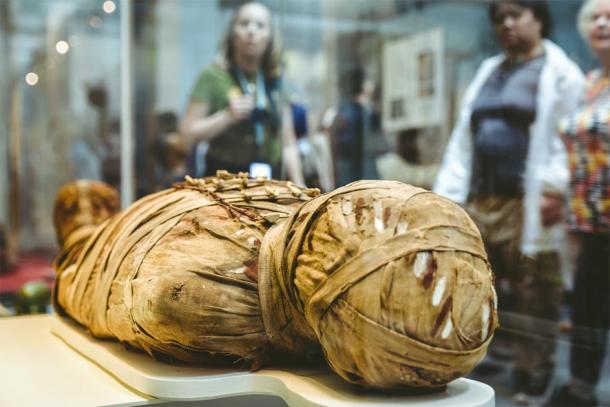



The internal organs, after being dried out with natron, accompany the corpse into the tomb. But it is essential that the heart is left. An incision is made, always on the left side of the body. This is achieved by pushing a pointed instrument up through a nostril to create a cavity, and then laboriously extracting the brain with a scoop. The first surgical task is to empty the skull without disfiguring the head. The embalming agent (a naturally occuring sodium carbonate called natron) is continually applied to any exposed parts of the corpse. Seventy days, under the supervision of the temple priests, is the ritual period in ancient Egypt for embalming and wrapping a corpse. The ritual of embalming: from about 2500 BC To prevent this, from around 2500 BC, the Egyptians develop the science of mummification. And they will become more secret from about 1500 BC the rulers are buried in rock tombs, excavated in the Valley of the Tombs of the Kings at Thebes and then sealed and camouflaged in an attempt to frustrate the grave robbers.īut the air circulating in any of these burial chambers will enable bacteria to go about their destructive business. The tombs will become more lavish over the centuries, with the bodies of pharaohs being placed at the centre of vast pyramids. The benefits of the dry desert sand are lost when royal and noble Egyptians begin to be buried in more impressive style - in the brick tombs known as mastabas. As a result this anonymous Egyptian is one of the earliest human beings to have survived in anything approaching recognizable form. And the hot sand preserves skin and bones almost miraculously - by extracting the moisture, without which bacterial decay is impossible. In Egyptian belief it is essential that the body be preserved, because life in the next world will be much the same as here. Unearthed at Naqada in the late 19th century, he is now in the British Museum and is popularly known as 'Ginger'. He has been a man of only moderate means. Buried with him are several pots, to carry food and drink in the next world, and some useful tools - three large blades of flint. The Egyptian way of death: c.3200-1350 BCĪn Egyptian dies, more than 5000 years ago.


 0 kommentar(er)
0 kommentar(er)
